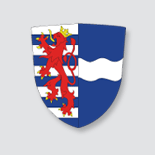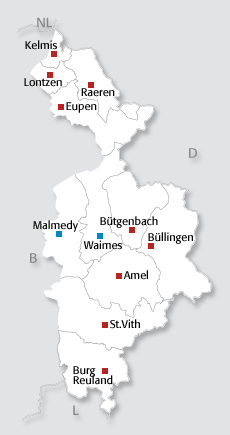Amel’s history
 Amel was part of the Celtic Eburon area. The name Amel means “Water” and is of Celtic origin. The Roman military road Reims-Cologne crossed the area of today’s community. In 1868, the remains of a Roman villa were discovered between Deitenberg and Monschau. The population has panned for gold in the rivers Amel and Emmels ever since Celtic times; raised deposits are a witness to this, even today.
Amel was part of the Celtic Eburon area. The name Amel means “Water” and is of Celtic origin. The Roman military road Reims-Cologne crossed the area of today’s community. In 1868, the remains of a Roman villa were discovered between Deitenberg and Monschau. The population has panned for gold in the rivers Amel and Emmels ever since Celtic times; raised deposits are a witness to this, even today. From the 5th to the end of the 13th century, the area was settled by the Franks. The first documented mention of the town of Amel was 670 (Curtis Amblava – Court of Amel). The annals of Metz mention the battle of Amel, which was fought between Austrasians and Neustrians.
Since 1405, Amel has belonged to the Grand Duchy of Luxembourg and was therefore given to the Austrian Heir to the Throne, Maria-Theresia, in 1748 with the Peace of Aachen (1748).
In 1794, during the Austrian-French war, the French occupied the area of today’s Belgium and also the area of Amel, which was then allocated to the Département de l'Ourthe.
Until Napoleonic times, Amel was part of Luxembourg but was given to Prussia in the Vienna Congress of 1815. After World War I, with the Contract of Versailles, it was given to Belgium. Except for the years of 1940 to 1945, when it was annexed by Germany along with the counties of Malmedy-St. Vith and Eupen, it remained part of Belgium.

